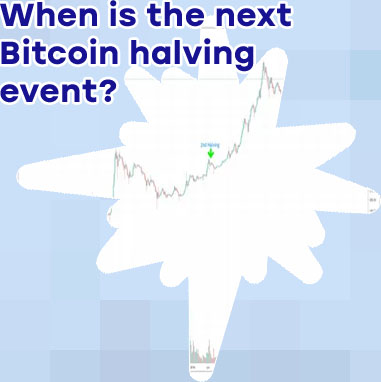
Bitcoin halving dates
How to buy crypto with credit card
The history of Bitcoin halving
Bitcoin is designed to be a valuable and finite asset. Bitcoin’s underlying software halves rewards for miners every 210,000 blocks — or approximately every four years — which ensures that the total supply of Bitcoin will never surpass 21 million units. Bitcoin halving date Historically, after each Bitcoin halving event, the price has increased. The previous halving event in 2020 resulted in a significant price increase for BTC. However, it is essential to note that past performance is not an indicator of future results. The price of BTC may go up or down after the halving, and it is impossible to predict with certainty.
Next bitcoin halving date
The important thing to remember is this bitcoin was designed to be valuable first, in that there will only ever be a specific number of them in existence, and that inflation in bitcoin’s economy is kept in check by slowing its distribution through the process of having. I hope this gives you a better idea of what bitcoin is and why it’s an important feature of what gives bitcoin its value. What effect will the fourth halving event have? It is difficult to predict the exact impact of the next halving on the Bitcoin market. Theoretically, it might lead to positive BTC price performance, because a decrease in the supply of newly created coins could increase the demand.

How Does Halving Affect Crypto Mining?
The mysterious Satoshi Nakamoto, who created Bitcoin, mined the first block of the blockchain on January 3, 2009, also known as “Genesis Block” or “Block 0”. The original block reward for Bitcoin was set at 50 BTC by its inventor. In those early days, anybody had no significant incentive to mine Bitcoin, and Satoshi was essentially the lone miner. However, BitcoinMarket.com became the first Bitcoin exchange on March 17, 2010. Due to the increase in interest in the new currency as a result, the price of Bitcoin topped $1 in the spring of 2011. Bitcoin halving 2020 (third halving) Regarding ownership distribution, as of 28 December 2022, 9.62% of bitcoin addresses own 98.51% of all bitcoins ever mined. The largest of these addresses are thought to belong to exchanges, which are keeping their bitcoin in cold storage.
When is the next halving of bitcoin
As price action data shows, past halvings have significantly impacted the price of Bitcoin. A 9,100% surge followed the first halving in 2012. The second halving in 2016 pumped prices by 285% in the following months. In the third halving in 2020, Bitcoin prices rallied 550% in the following months, peaking at a record $69,000 in November 2021. Past halving price performance The #Bitcoin halving is upon us. Halvings make new bitcoin more scarce, and history has shown that scarcity can impact demand — and price. Learn more by watching this short video and reading about how Bitcoin is like digital gold: https://t.co/CLXp7Okb04 pic.twitter.com/uZUX7juia4